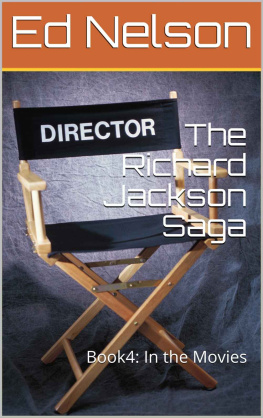Typeset in Quadraat by Keystone Typesetting, Inc.
Library of Congress Cataloging-in-Publication data appear on the last printed page of this book.
acknowledgments
For more than ten years, I have carried this book with me everywhere. Now that it is finished, I am delighted to be able to thank the people who have helped me in so many ways. I owe an immense debt of gratitude to my mentors at the University of Chicago. Terry Turner introduced me to the intellectual rigor and ethnical responsibility of the discipline and opened my eyes to the possibilities of Marxist anthropology. John Kelly has been a tremendous source of intellectual inspiration and moral support during my years at Chicago, and I learned a great deal from him about what it means to be a teacher. Joe Masco joined my committee during my final months at Chicago, and I am grateful for his close readings and incisive comments. Finally, it has been my good fortune to work with Harry Harootunian. His example and his encouragement have made this project possible.
I am also deeply indebted to my friends and colleagues who read this manuscript at different stages. I would particularly like to thank Jeff Bennett, Kevin Caffrey, Sean Gilsdorf, Sharon Hayashi, Heather Hindman, Bill Marotti, Ochi Toshio, Rob Oppenheim, Paul Ryer, Amanda Seaman, Kimbra Smith, Umemori Naoyuki, and Hylton White. I can never fully repay their generosity nor adequately acknowledge their contributions. My thanks as well to Linda Angst, Jan Bardsley, Davinder Bhowmik, Mark Driscoll, Judith Farquhar, Gerald Figal, Larry Grossberg, Carie Little Hersh, Jim Hevia, Glenn Hook, David Howell, Igarashi Akio, Masamichi Inoue, John MacAloon, Ota Yoshinobu, James Roberson, Patricia Sawin, Rick Siddle, Robert J. Smith, Greg Smits, Robert Sukle, Tomiyama Ichir, Mark and Kyoko Selden, Amanda Stinchecum, and Brad Weiss for their comments and encouragement over the years. My students and colleagues in the Department of Anthropology at the University of North Carolina have given me an intellectually stimulating and amazingly pleasant environment in which to teach and to write. I have been fortunate to work out my thoughts in discussions at the Cultures of Economies and Cultures of Memory working groups at Carolina, and to present my ideas in seminars at Columbia, Duke, New York University, Sheffield, and the University of California, Los Angeles. During the fall of 2006, the fellows at Carolinas Institute for the Arts and Humanities kept me on track and helped me to put the final pieces in place. Reynolds Smith and Sharon Torian at Duke University Press steered me through the turbulent waters and rocky shoals of academic publishing. I am especially grateful to my readers, Anne Allison and Michael Molasky, for their critical readings and thoughtful suggestions. Anne in particular found something in that first, awkward draft and I am very glad that she encouraged me to bring it out. Finally, I want to thank Matt Hull and Margaret Wiener for the long hours that weve spent together reading and discussing our work. They were able to see this book in me, and helped me bring it to the page.
I must also thank the countless people in Okinawa who helped me over the years. Hiyane Teruo at the University of the Ryukyus was a constant source of support and I am grateful for his sponsorship. I am also indebted to Ishihara Masaie for his help in organizing my fieldwork in Okinawa City. Akamine Masanobu, Kumada Susumu, Tsuha Takashi, and all the members of the Okinawa Minzoku Gakkai welcomed me into their group and shared their extensive knowledge of Okinawan culture. Aoyama Yji and the members of the Uchinguchikai in Okinawa City were also extremely kind and helpful. The staff of the Peace and Culture Promotion Section at the Okinawa City Hall were always willing to provide information and assistance, and to listen to my ideas. I am also grateful for the friendship and support of scholars such as Matt Allen, Tony Jenkins, Kawabata Miki, Nameki Ibuki, Sat Takehiro, John Whalen-Bridge, and Craig Willcox.
I owe a special thanks to Maetakenishi Kazuma and his family for their generosity and kindness. My thanks as well to the Higa and Miyazato families, the late yama Chj, the late Ahagon Shk, Arasaki Moriteru, Arime Masao, Maeshiro Gentoku, Chibana Shichi, Kina Shkichi, Miyanaga Eiichi, Takara Ben, Takara Kurayosi, Gakiya Yoshimitsu, Sadoyama Yutaka, the late Teruya Rinsuke, and Teruya Rinken. Tamaki Mitsuru made the resources of the Shchiku Kagekidan and Ashibin available to me, and he and his family were always unstintingly generous. Fujiki Hayato was an endless source of ideas, humor, and advice. I would also like to thank Bise Katsu for sharing his encyclopedic knowledge of Okinawan performing arts.
The residents of Sonda welcomed my family and me into their community and allowed me to join their seinenkai. I will be forever thankful for their kindness. My thanks to the Sonda Jichikai, the Sonda Seinenkai and its Old Boys, especially Iha Masakazu, Kuba Masayuki, Higa Eiz, Okuma Masakazu, Maeagura Ken, Miyazato Yichi, and all those with whom I danced between 1997 and 1999. I am particularly grateful to the Kohama family for their friendship and consideration.
My initial fieldwork from 1996 to 1998 was made possible by a fellowship from the Fulbright Foundation. A grant from the Gakujutsu Furonti project at Rikkyo University allowed me to return to the field during the summer of 1999. I received a dissertation writing fellowship at the University of Chicago from the Toyota Foundation, as well as additional support from the Center for East Asian Studies and Lichtstern Fund of the Department of Anthropology. My work at the University of North Carolina at Chapel Hill was supported by a junior faculty development grant, research and travel grants from the Carolina Asia Center and the Freeman Fund, and a prepublication grant from the University Research Council. I also received a faculty study and research leave and spent a wonderful semester at the Institute for Arts and Humanities.
Finally, my deepest gratitude goes to my families in both America and Japan. They have supported me in so many ways since I first announced a vague scheme to resign my commission in the Marines and look into graduate school. To my wonderful daughters, Fiona and Siobhan, whose love and laughter has been a daily inspiration. Most of all, to Atsuko, my partner in everything.
introduction
the battlefield of memory
So the same river swirls, snatches, sheds its veils, and runs by, under the spell of the sweetness of the stones, the shadows, and the grasses. The water, mad for its swirls like a real mane of fire. To glide like water into pure sparklefor that we would have to have lost the notion of time. But what defense is there against it; who will teach us to decant the joy of memory?ANDR BRETON, Mad Love
THE STREETS OF KOZA
My first visit to Okinawa CityKoza, as the signs on the buses still readwas on a warm, late summer night in 1985. The years pass and I think of it often, but I can never seem to fit my memories into a coherent narrative. It seems that all I have are fragments, sensations. I remember standing on a sidewalk alongside Route 330. I was a twenty-three-year-old Marine lieutenant, an infantry officer. I had just stepped out of Apple, a bar crowded with GIs and young Okinawans. Although Id like to describe the bar as it was when I was a Marine, what I remember is the way that it looked during my fieldwork. By then, it had closedits faade peeling in the remorseless subtropical sun, its windows filthy, its sign missing. Ghostly, faded figures of the Beatles from the cover of



















